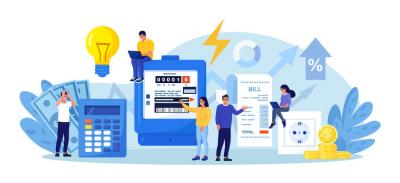The Green Sheet Online Edition
October 13, 2025 • 25:10:01
Give customers credit, but not too much

"Give credit to whom credit due," wrote Samuel Adams on Oct. 29, 1777, in a letter to John Adams, commemorating Saratoga, a defining victory in the American Revolution. The idea of acknowledging our helpers, even when we don't like them or agree with them, could also apply to banks that undervalue on-time-paying customers. These customers, known as "transactors" and "deadbeats" in the trade, don't pay interest on revolving accounts, but they help card issuers win in other important ways, according to a recent study.
The J.D. Power 2025 U.S. Credit Card Satisfaction Study, published Aug. 14, 2025, found transactors more satisfied with card brands than "revolvers" who carry balances (see www.jdpower.com/business/credit-card-consumer-insights). The study polled 37,293 credit card customers between June 2024 and June 2025 and found credit card transactors with no revolving debt were 4 points more satisfied than the previous year.
Transactors versus revolvers
John Cabell, managing director of payments intelligence at J.D. Power, shared pros and cons associated with each customer segment, as follows: Revolvers: "Customers who have debt are paying interest but also present risk of default and financial stress, so that revenue positive for the issuer is a drain on satisfaction for the customer, who may be less likely to refer business or to be an asset in the issuer's portfolio."
Transactors: "Customers who don't pay interest [on account balances] bring higher monthly spend to the products they purchase and generate more interchange revenue for issuers. They also bring other types of business to the relationship that can be net positive by being high annual fee payers and deposit account holders."
Financial health versus satisfaction rates
The J.D. Power study found differing satisfaction rates among transactors and revolvers, Cabell noted, with financially healthy customers more satisfied with service charges, interest rates, credit limits and membership fees. Revolvers, on the other hand, were less satisfied with credit limits and account management and were more likely to have used buy now, pay later (BNPL).
"In the study, 40 to 50 percent of revolvers said they would probably or definitely use BNPL from another lender, compared to only 23 percent of transactors," Cabell said. "That's a big difference; we saw an uptick in average debt and use of BNPL and card payment plans, which are not technically buy now, pay later but rather post-sale offers from issuers."
In-house versus third-party BNPL
Cabell pointed out that the J.D. Power study distinguished between BNPL and card issuer plans to understand who was defecting from credit card issuers to third-party BNPL providers and who used issuers' post-sale plans. Researchers found 12 percent of consumers used a card payment plan that was part of their credit card, and 20 percent used BNPL from another lender over the past year.
Bryce Deeney, CEO of equipifi, a BNPL provider for banks and credit unions, believes their established relationships with customers give financial institutions a distinct advantage over third-party BNPL providers. "Their BNPL programs can be more personalized and financially informed," he said. "Approval is simpler, funds are deposited faster, and everything works through the debit card and checking account the customer already uses."
Enlightened versus opportunistic lending
Cabell acknowledged the fine balance between providing access to credit and providing too much access. "A person's status can change very quickly, perhaps by losing a job or facing a big medical expense," he said. "Any number of things can turn a person's finances sideways, and that's when a credit card can be a great assistance or worsen financials."
Deeney agreed, stating debit cards reduce risk by limiting credit access to available funds. "Banks and credit unions are unlocking installment capabilities on debit cards and BNPL companies are racing to launch debit products," he said. "Last year, we saw FI BNPL usage grow and often overtake all third-party BNPL providers combined in a few months; this year, JD Power found that consumers remain slightly more satisfied with BNPL from their financial institution than from a fintech." 
Dale S. Laszig, content strategy director at The Green Sheet and founder and CEO at DSL Direct, is a payments industry journalist, creator and consultant. Connect via email at dale@dsldirectllc.com and LinkedIn at www.linkedin.com/in/dalelaszig.
Notice to readers: These are archived articles. Contact information, links and other details may be out of date. We regret any inconvenience.





